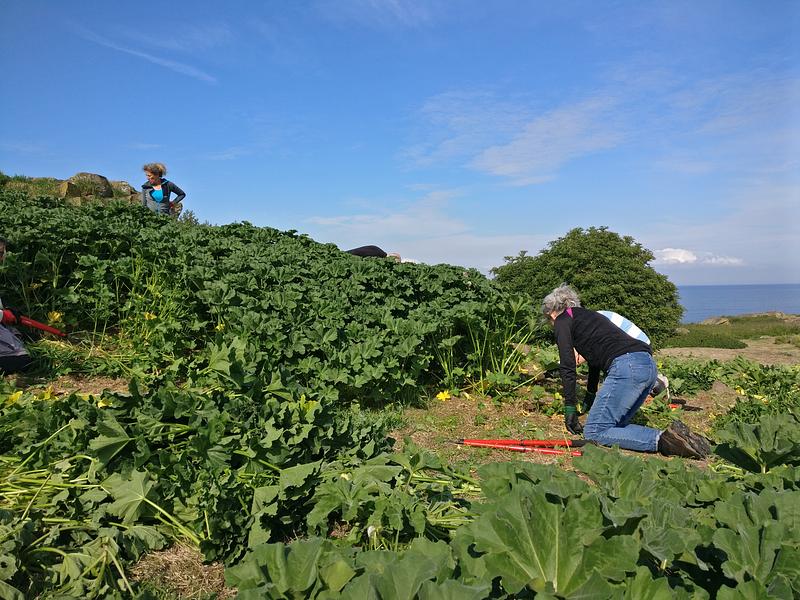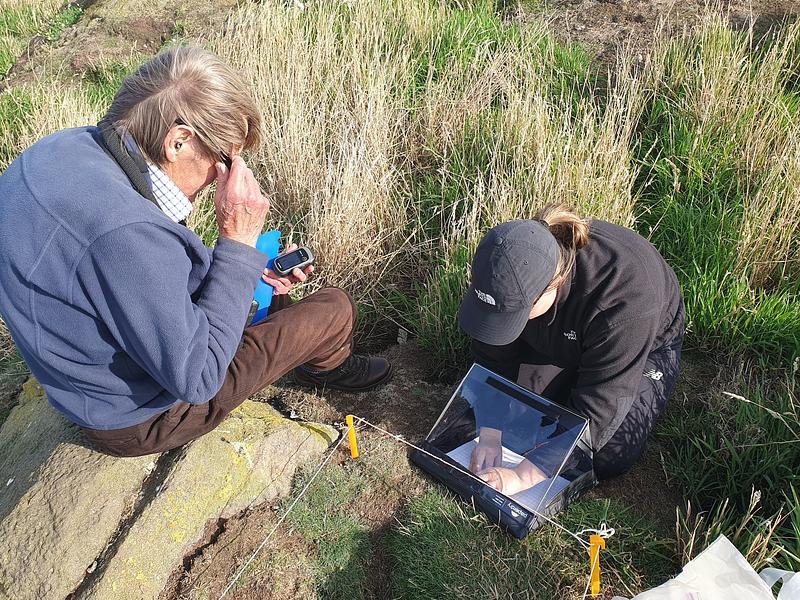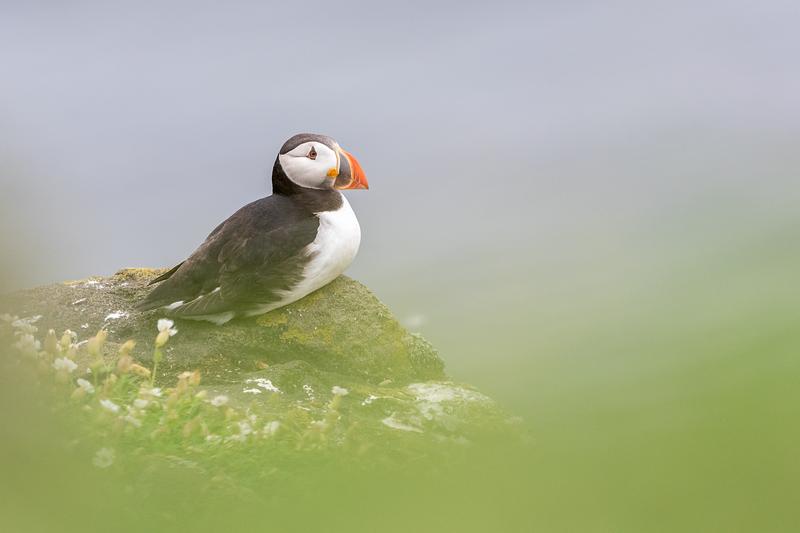_Jamie_McDermaid-2.jpg)
Digging up the Truth: Puffins and the Problem with Invasive Plants
Research Spotlight: Do Burrowing Puffins Promote Tree Mallow Growth?
By Charlotte Tomlinson, Scotland’s Rural College (SRUC)
Craigleith has long been home for many Puffins, who travel to the island every Spring to breed. However, across the 1990s and early 2000s, an invasive plant called tree mallow spread across the island in thick, dense stands. This made it very difficult for puffins to access their burrows and hugely reduced the numbers of breeding puffins on Craigleith.
In an effort to encourage puffins back to the island, the Scottish Seabird Centre set up the SOS Puffin project, bringing volunteers onto Craigleith to cut down the tree mallow. This has been a successful project, with coverage of tree mallow on Craigleith down from 80% in 2006 to 6% in 2021 and puffin numbers on the rise again.

There has long been a theory that the soil disturbance caused by puffins, as they burrow for nesting and breeding purposes, is linked to higher germination of the invasive tree mallow. To complete my BSc (Hons) Wildlife and Conservation Management at SRUC, I carried out my Honours project on Craigleith, focused on investigating this interaction between puffins and tree mallow.
I headed to Craigleith in late August, accompanied by my project supervisor Dr Helen Anderson, tree mallow expert John Hunt, and Scottish Seabird Centre staff Emily Burton, Emma Marriott, and Jamie McDermaid. Forever followed by the sounds of gulls overhead, I took samples across the island looking at various factors which might be linked to the germination of the tree mallow. This included recording the presence of Puffin burrows, rabbits, the amount of bare ground, the angle of the slope, the direction the burrow was facing, and any other plant species present in the area.

I found that there were more tree mallow seedlings around areas of puffin burrows than areas without burrows. This means that where the soil had been disturbed by puffins, more tree mallow had germinated. I found there were also a few other ecological and climatic factors which may come into play and influence the growth of tree mallow – including the amount of bare ground and additional soil disturbance by rabbits. The conclusion I came to is that burrowing by puffins (and rabbits) disturbs the soil, creating good conditions for seed germination of tree mallow in the fine, loose topsoil. Burrowing also likely overturns seeds in the seedbank and brings them to the surface – exposing them to light and oxygen. Where there are high amounts of bare soil caused by burrowing, it is easier for the invasive tree mallow to colonise as it has no other plants to compete with in the area.
This small island is complex and dynamic. Soil disturbance, grazing, weather, climate change, and the various seabird species present all influence and contribute to the changes in the vegetation. As the puffins will continue to burrow each year, the tree mallow seeds will continue to be exposed to good soil conditions and therefore will continue to germinate. This study suggests that, because of the soil disturbance, the tree mallow would increase again if the current management of it was stopped. Knowing this helps us understand how puffins interact with the environment around them, giving us more knowledge in protecting the puffin population on Craigleith for the future.


